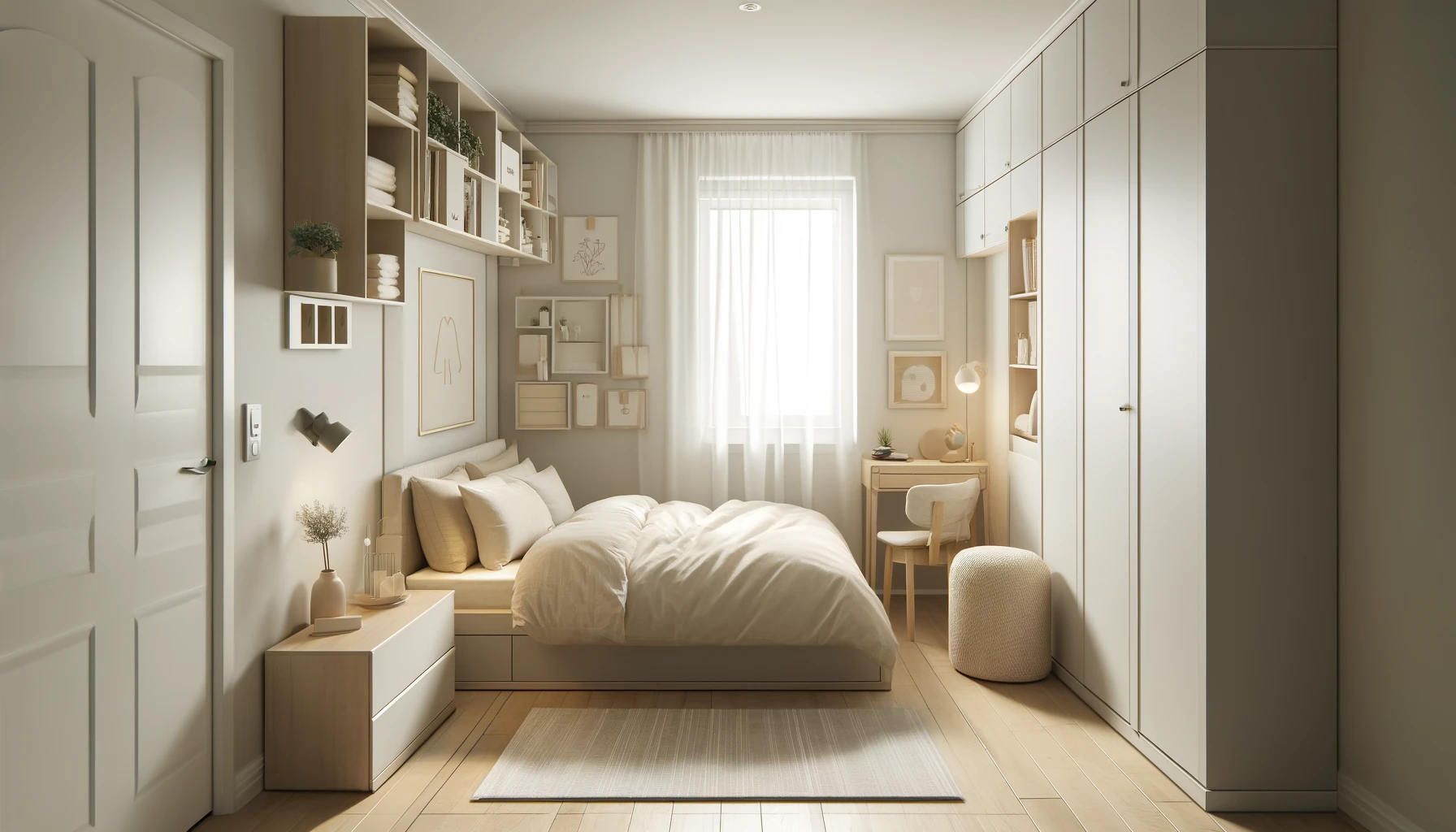Decorating a small bedroom can be tricky, especially when trying to maximize space while maintaining style and comfort. While there are many things you can do to make the most of your small bedroom, there are also certain mistakes you should avoid. In this article, we’ll go over what not to do when decorating a small bedroom and offer tips on how to create a space that feels spacious, organized, and inviting.
1. Don’t Overcrowd the Room with Furniture
One of the biggest mistakes people make when decorating small bedrooms is overcrowding the space with too much furniture. In small rooms, every piece of furniture should serve a purpose and fit the scale of the room.
- Limit the furniture: Stick to the essential pieces, such as the bed, a nightstand, and possibly a small dresser or wardrobe. Avoid adding too many items like extra chairs or large pieces of furniture that take up too much floor space.
- Scale matters: Choose furniture that fits the size of the room. A bulky bed or oversized furniture can make the space feel cramped and uncomfortable.
By carefully selecting the right furniture and keeping things minimal, you can ensure the room feels open and spacious.
2. Don’t Ignore the Importance of Storage
In small bedrooms, storage is key to keeping the room organized and clutter-free. Failing to incorporate smart storage solutions can quickly turn a cozy bedroom into a chaotic space.
- Use under-bed storage: Make the most of the space under your bed by using storage bins, drawers, or boxes. This will allow you to store off-season clothing, shoes, or extra bedding without taking up additional floor space.
- Invest in functional furniture: Look for furniture that doubles as storage, such as a bed with built-in drawers or an ottoman that opens to reveal hidden storage.
Without proper storage, even the most stylish bedroom can feel disorganized and cluttered.
3. Don’t Use Too Many Dark Colors
While dark colors can create a cozy atmosphere, they can also make a small room feel even smaller. If your bedroom is lacking in natural light or feels a bit cramped, it’s best to avoid using too many dark shades on the walls or furniture.
- Lighten up the walls: Use lighter colors like whites, light grays, or soft pastels to make the room feel brighter and more spacious. Light colors reflect light, which helps open up the space.
- Accent with dark shades: If you love dark colors, incorporate them as accents through bedding, throw pillows, or wall art rather than using them as the dominant color in the room.
Using lighter colors will make your small bedroom feel more open and airy, while still allowing you to add contrast with darker accents.
4. Don’t Block Natural Light
Natural light can make a small room feel much larger and more inviting. Blocking windows or covering them with heavy curtains can make the room feel dark, cramped, and less welcoming.
- Use light window treatments: Opt for sheer curtains or light blinds that allow natural light to filter into the room. This will help brighten the space and make it feel more open.
- Strategically place mirrors: Mirrors reflect light, so placing them opposite windows can help spread natural light throughout the room and make the space feel bigger.
Maximizing natural light is essential for creating a bright and airy bedroom that feels spacious and inviting.
5. Don’t Overload the Room with Decor
In small spaces, less is often more when it comes to decor. Overloading the room with too many decorative items can make it feel cluttered and visually overwhelming.
- Keep it simple: Choose a few key decor pieces that complement the overall design of the room, such as a statement piece of art, a cozy rug, or a set of elegant throw pillows.
- Use vertical decor: In small rooms, it’s better to decorate vertically rather than horizontally. Hang artwork or shelves on the walls to draw the eye upward and create the illusion of height.
By keeping the decor minimal and well-chosen, you can create a more serene and visually appealing space.
6. Don’t Skip on Functionality
While aesthetics are important, functionality should never be overlooked in a small bedroom. If your bedroom looks stylish but isn’t practical, it won’t be a comfortable or efficient space to sleep or relax in.
- Prioritize comfort: Choose a comfortable mattress and soft bedding to ensure that your bedroom is a restful retreat. A beautiful room is nothing without a good night’s sleep.
- Maximize space with furniture: Opt for furniture that’s functional and fits the room’s needs, such as a multi-purpose bed with storage or a compact desk for small workspaces.
Balancing both style and function is key to creating a small bedroom that is both beautiful and livable.
Conclusion
Decorating a small bedroom can be challenging, but by avoiding common mistakes, you can create a space that feels open, organized, and comfortable. Keep the furniture minimal and well-scaled, prioritize storage, and use light colors to maximize the sense of space. Don’t block natural light, keep decor simple, and ensure the room remains functional. With these tips, you’ll be able to create a small bedroom that’s not only stylish but also practical and cozy.
